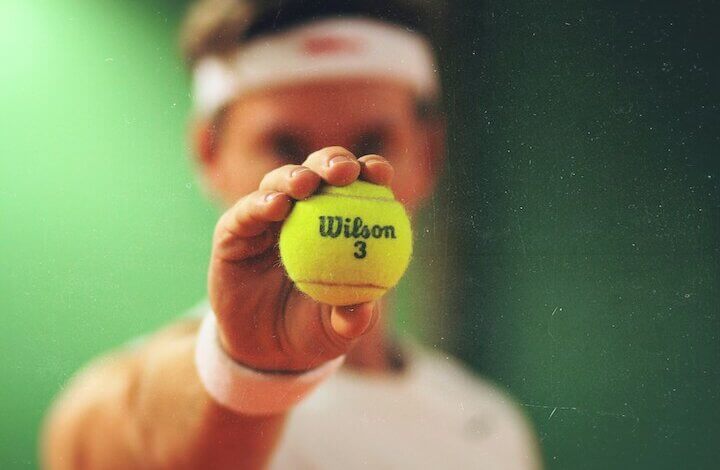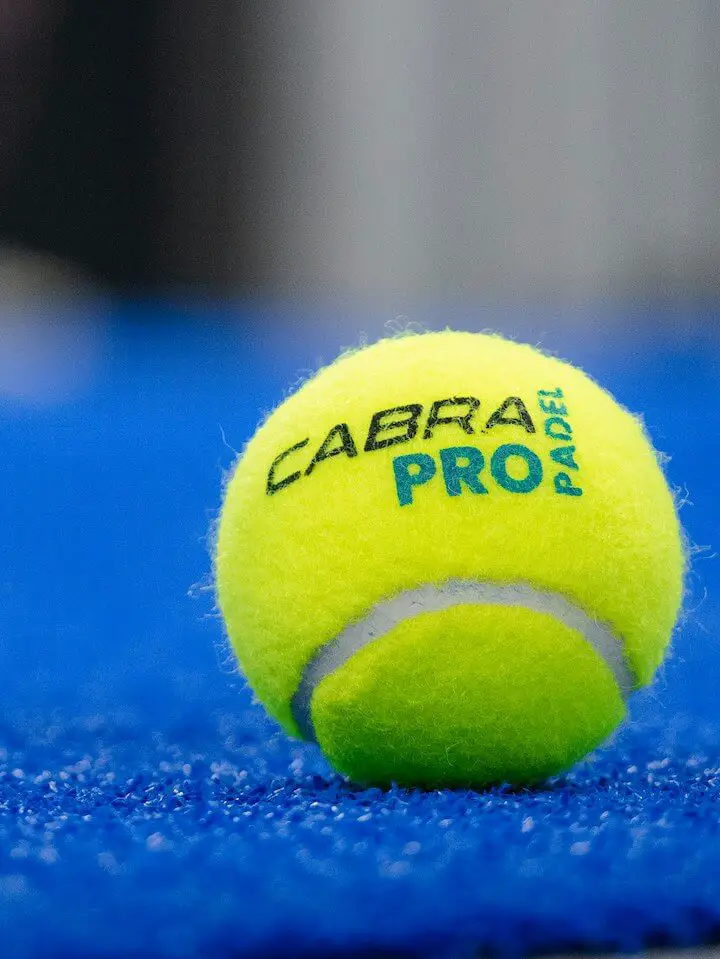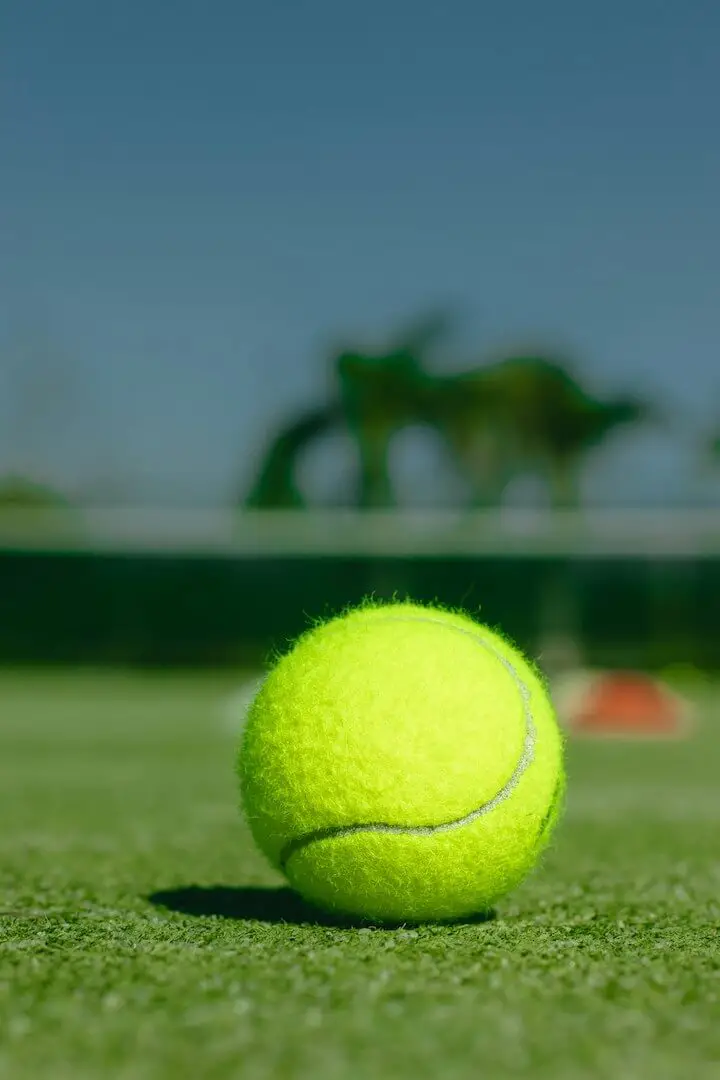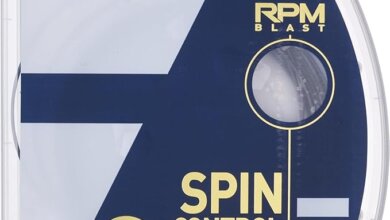
We're an affiliate
We hope you love the products we recommend! Just so you know, we may collect a share of sales or other compensation from the links on this page. Thank you if you use our links, we really appreciate it!
You’ve seen them fly across the court, bounce off the baseline, or roll quietly under the bench. But have you ever paused mid-match or practice and wondered: what’s inside a tennis ball? Not just what it looks like, but what actually makes it bounce, spin, and wear out the way it does?
I used to think they were just squishy yellow balls with fuzzy hair. Nothing fancy. But once I got curious and started peeling back the layers—literally and figuratively—it opened up a whole new level of understanding. If you love the game or you’re just starting out, trust me, it’s worth knowing what you’re playing with.
Let’s break it down. You and me. No complex terms, no textbook language. Just simple truths about what’s inside a tennis ball—and why it even matters.
Table of Contents
Key Takeaways
- A tennis ball has two main layers: the felt outer layer and the rubber core.
- The felt affects spin, control, and drag in the air.
- The rubber core gives the ball structure and bounce.
- Pressurized balls bounce better short-term but lose pressure quickly.
- Pressureless balls last longer but feel heavier and less lively.
- Knowing what’s inside a tennis ball helps you choose the right one for your game.
Why This Even Matters
You might be thinking, why should I care what’s inside a tennis ball? Fair question.
Here’s the thing: everything about a tennis ball—its bounce, its weight, the way it reacts to your racket—is shaped by what’s inside it. The way a ball feels during a match, the way it wears down after a few sets, even the sound it makes when it hits your strings—it all comes down to how it’s built.
And if you’ve ever spent time picking tennis shoes, string types, or rackets based on your style, then this is no different. The better you understand what’s going on inside that yellow shell, the smarter your game gets.
Plus, it’s kind of fun. Peeking inside something you’ve used a hundred times without thinking. So let’s open it up.

Breaking It Down: What’s Inside a Tennis Ball?
The Outer Felt – That Fuzzy Yellow Coat
The first thing you notice about a tennis ball is that soft, fuzzy layer. It looks almost like carpet at first glance. That’s called the felt. And while it may not look like much, this layer is doing a lot more work than you think.
It’s made from a blend of wool and nylon. The wool gives it durability, while the nylon helps it hold shape and resist tearing. Ever wonder why a fresh tennis ball feels smooth and tight, but after a few sets it gets rough and fluffy? That’s the felt wearing down.
But it’s not just about looks. The felt adds grip. When your racket strings brush against the ball, the felt helps grab and spin it. That’s where topspin, slice, and control come from. The fuzz also adds just the right amount of drag in the air, which helps slow the ball slightly and gives you a chance to react.
No felt = no finesse. So that soft stuff on the outside? It matters more than you think.
Also Read: Best Men’s Nike Tennis Shoes For This Year
The Rubber Core – Where the Bounce Lives
Now let’s get inside.
Once you slice through the felt, you’ll hit the rubber core. This is the heart of the ball. It’s a hollow rubber sphere, and this is where the bounce comes from.
When you squeeze a tennis ball, you’re feeling the air trapped inside this rubber shell. That pressure builds up inside the core and pushes back every time the ball hits the ground or your racket. That’s why new balls feel so springy. They’ve got full internal pressure pushing outward.
If you cut open a tennis ball that’s been used too much, you’ll find that it’s lost some of that pressure. The rubber is still there, but the inside feels a little dead. That’s why it doesn’t bounce the same way anymore.
The rubber core also gives the ball weight and structure. Without it, the ball wouldn’t just lose bounce—it would lose its shape entirely.
Pressurized vs. Pressureless – Two Types of Tennis Balls
Here’s where it gets interesting.
Not all tennis balls are the same on the inside. There are pressurized and pressureless balls, and what’s inside each one is a little different.
Pressurized Balls
These are the most common. They’re filled with air (or nitrogen) and sealed tightly in a can to keep that pressure locked in. When you open the can, that little “pssst” sound? That’s the gas escaping from the can, not the ball. But over time, the gas inside the rubber core starts to leak out. After a week or two—even if you barely used them—the balls lose their bounce.
Pressureless Balls
These don’t rely on internal pressure. They’re solid or nearly solid rubber inside, and they get their bounce from the rubber itself, not the gas. They don’t feel quite as lively when brand new, but they actually last longer in terms of playability. Great for practice and ball machines.
So depending on which one you’re holding, what’s inside a tennis ball can vary quite a bit.
How the Inside Affects How You Play
Let’s bring this back to real life.
When you’re hitting forehands or chasing a fast serve, the way the ball moves is shaped by what’s going on inside. That felt? It controls spin and pace. That rubber core? It decides whether the ball zips forward or flops flat. The pressure inside? That determines how responsive the ball feels off your strings.
Ever noticed that a match ball feels different than a practice ball? Now you know why.
If you like long rallies and consistent feel, you might prefer pressureless balls. If you like that crisp bounce and live play, pressurized balls are the way to go—just replace them often.
Knowing this helps you make smarter choices for your game. It’s not about being technical. It’s about noticing what feels right and why.
How It All Comes Together
You’ve got the felt, giving grip and spin. The rubber core, bringing structure and bounce. And the internal pressure, giving it life—or taking it away once it’s gone.
Each part has its job. And when you put them all together, you get a ball that can fly across a court at 100 mph, land on a dime, and still feel light in your hand.
The International Tennis Federation (ITF) actually checks every ball to make sure it meets certain weight, size, and bounce standards. So when you pick up a ball, you’re not just holding rubber and felt. You’re holding a carefully balanced piece of equipment.
Check Out: Ultimate String Tension Guide for Beginners: Find Your Perfect Setup
Does It Really Matter What’s Inside?
Here’s the honest answer.
If you just play for fun once in a while, maybe not. But if you’re even a little serious—whether you’re picking shoes, rackets, or strings—it helps to understand how everything fits together. What’s inside a tennis ball matters more than it seems.
It can help you figure out why your shots feel off one day or why your rallies get shorter with older balls. It can even save you money by helping you pick the right ball for how you play.
And if nothing else, it just feels good to know.

Conclusion
So now you know. What’s inside a tennis ball isn’t just fluff and rubber—it’s a blend of materials working together to shape every moment on the court. From that first crisp bounce to the last tired drop shot, each part of the ball plays a role.
And just like with your shoes or your racket, getting curious about what’s under the surface makes you better. Not just in how you play, but in how you think about the game.
So next time you pick up a ball, take a second. Feel the felt. Press the core. And remember, there’s more going on in that yellow fuzzball than meets the eye.
Frequently Asked Questions
Are tennis balls filled with gas?
Yes, pressurized tennis balls are filled with either air or nitrogen to give them their bounce. This gas is sealed inside the rubber core.
Why do tennis balls lose their bounce over time?
Over time, the gas inside pressurized balls slowly leaks out. This causes the ball to feel flat and lose its bounce.
What’s the difference between yellow and white tennis balls?
The color doesn’t change what’s inside a tennis ball. Yellow is more common in professional and recreational play because it’s easier to see. White balls are still used on some grass courts or in specific training settings.
Can you recycle or reuse tennis balls?
Yes. Used tennis balls can be repurposed for chairs, walkers, dog toys, or even art projects. Some brands also collect and recycle them for eco-friendly surfaces.




